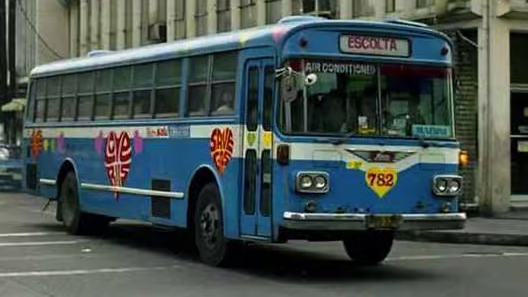For millions of Filipinos, commuting isn’t just a daily task—it’s a trial of patience, resilience, and hope. It’s the early-morning dash for a packed MRT train, the midday crawl along EDSA, and the gamble of getting a seat on a provincial bus home after a long week. So when President Ferdinand Marcos Jr. promised sweeping upgrades to the country’s transport system in his recent State of the Nation Address (SONA), ears perked up—not from politeness, but from weary curiosity.
What began as an experiment on mass transport management turned into a runaway success, with the government exercising control over its operations from 1976 to 1983. The Love Bus was touted as the first luxury fleet of air-conditioned buses and patronized by urban professionals during its heyday. Reviving the 1970s-era Love Bus, with its promise of free rides and retro charm, seems more than symbolic. It suggests an effort to restore dignity and comfort to mass transit. According to the President, pilot runs in Cebu and Davao are just the beginning, with an eventual expansion across Mindanao—a region often underserved and overdue for mobility investments.
In Metro Manila, commuters might find more tangible relief in the rollout of 45 new MRT-3 train cars, a quantum leap from the three sets currently in use. The difference between squeezing into a train like sardines and standing with a bit of breathing room isn’t small—it’s the difference between arriving to work stressed or calm, productive or drained.
Then there’s the promise of discounts—50% off LRT fares, double the previous 20%. For many, that’s breakfast money saved or a portion of school fees. It’s the administration signaling that yes, the ride matters, but so does the rider.
Outside the capital, the spotlight shifts to the P219 billion Bataan-Cavite Interlink Bridge (BCIB), a 32-kilometer span that will cut travel time from Mariveles in Bataan to Naic in Cavite to just 45 minutes. That’s not just a win for motorists—it’s a lifeline for workers, traders, students, and patients accessing services that were once hours away. And with its marine viaducts and cable-stayed design, it’s as much a testament to connectivity as it is to architectural aspiration.
Mindanao’s 428-kilometer transport project connecting Cagayan de Oro, Davao, and General Santos might be the sleeper hit—proof that infrastructure isn’t just about concrete and steel, but about stitching together lives, families, and futures.
Still, questions linger. EDSA, Metro Manila’s congested spine, received only a footnote: the rehabilitation of Guadalupe Bridge. No full revamp (yet), but there’s an acknowledgment that band-aid solutions won’t cut it forever. Detour bridges will be built to ease the strain, but for now, EDSA commuters brace for more of the same.
In a country where riders often know each other’s sighs better than their names, these updates bring a mix of optimism and guarded realism. Yes, things are moving. But will they move fast enough—and reach deep enough—for the ordinary commuter?
Because in the end, it’s not about grand announcements. It’s about whether Juana gets to her shift on time. Whether Mang Juan can afford his weekly commute to the hospital. Whether people feel less like statistics and more like citizens being truly moved—physically and figuratively—by progress.





